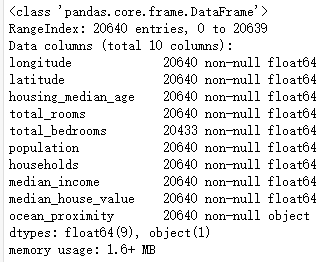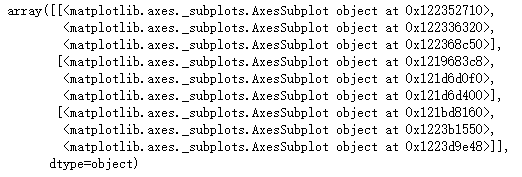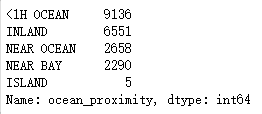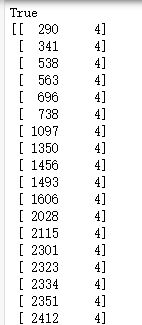import pandas as pd data_path = '/Users/chenyi/Documents/housing.csv' housing = pd.read_csv(data_path) housing.info()

housing.head()

housing.describe()

housing.hist(bins=50, figsize=(15,15))




housing['ocean_proximity'].value_counts()

import seaborn as sns total_count = housing['ocean_proximity'].value_counts() plt.figure(figsize=(10,5)) sns.barplot(total_count.index, total_count.values, alpha=0.7) plt.title("Ocean Proximity Summary") plt.ylabel("Number of Occurences", fontsize=12) plt.xlabel("Ocean of Proximity", fontsize=12) plt.show()

print(housing.shape)

#将ocean_proximity转换为数值 housing['ocean_proximity'] = housing['ocean_proximity'].astype('category') housing['ocean_proximity'] = housing['ocean_proximity'].cat.codes #将median_house_value分离出来最为被预测数据 data = housing.values train_data = data[:, [0,1,2,3,4,5,6,7,9]] train_value = data[:,[8]] print(train_data[0]) print(train_value[0])

print(np.isnan(train_data).any()) print(np.argwhere(np.isnan(train_data))) train_data[np.isnan(train_data)] = 0 print(np.isnan(train_data).any())

mean = train_data.mean(axis=0) train_data -= mean std = train_data.std(axis = 0) train_data /= std
model = models.Sequential() model.add(layers.Dense(64, activation='relu', input_shape=(train_data.shape[1],))) model.add(layers.Dense(128, activation='relu')) model.add(layers.Dense(128, activation='relu')) model.add(layers.Dense(1)) model.compile(optimizer='rmsprop', loss='mse', metrics=['mae'])
history = model.fit(train_data, train_value, epochs=300, validation_split=0.2, batch_size=32)

val_mae_history = history.history['val_mean_absolute_error'] plt.plot(range(1, len(val_mae_history) + 1), val_mae_history) plt.xlabel('Epochs') plt.ylabel('Validation MAE') plt.show()

def smooth_curve(points, factor=0.9): smoothed_points = [] for point in points: if smoothed_points: previous = smoothed_points[-1] smoothed_points.append(previous * factor + point * (1 - factor)) else: smoothed_points.append(point) return smoothed_points smooth_mae_history = smooth_curve(val_mae_history) plt.plot(range(1, len(smooth_mae_history)+1), smooth_mae_history) plt.xlabel('Epochs') plt.ylabel('Validation MAE') plt.show()

import matplotlib.pyplot as plt import matplotlib.ticker as plticker try: from PIL import Image except ImportError: import Image # Open image file image = Image.open('doggy.jpeg') my_dpi=300. # Set up figure fig=plt.figure(figsize=(float(image.size[0])/my_dpi,float(image.size[1])/my_dpi),dpi=my_dpi) ax=fig.add_subplot(111) # Remove whitespace from around the image fig.subplots_adjust(left=0,right=1,bottom=0,top=1) # Set the gridding interval: here we use the major tick interval myInterval=100. loc = plticker.MultipleLocator(base=myInterval) ax.xaxis.set_major_locator(loc) ax.yaxis.set_major_locator(loc) # Add the grid ax.grid(which='major', axis='both', linestyle='-') # Add the image ax.imshow(image) # Find number of gridsquares in x and y direction nx=abs(int(float(ax.get_xlim()[1]-ax.get_xlim()[0])/float(myInterval))) ny=abs(int(float(ax.get_ylim()[1]-ax.get_ylim()[0])/float(myInterval))) # Add some labels to the gridsquares for j in range(ny): y=myInterval/2+j*myInterval for i in range(nx): x=myInterval/2.+float(i)*myInterval ax.text(x,y,'{:d}'.format(i+j*nx),color='w',ha='center',va='center') # Save the figure fig.savefig('doggy.tiff',dpi=my_dpi)